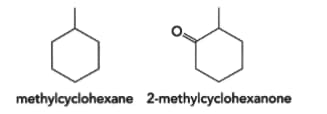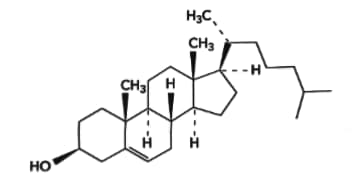HARD
AS and A Level
IMPORTANT
Earn 100
The molecule exhibits optical isomerism. Draw the displayed formulae of both optical isomers.

Important Questions on Introduction to Organic Chemistry
HARD
AS and A Level
IMPORTANT
Which one of the following can have optical isomers? Draw the displayed formula of your chosen answer and clearly label its chiral centre.
HARD
AS and A Level
IMPORTANT
Consider the two molecules below. Compare the number of chiral centres in each molecule and clearly label any chiral centres.

HARD
AS and A Level
IMPORTANT
Look at the structure of the cholesterol molecule. How many chiral centres are present in a cholesterol molecule?

HARD
AS and A Level
IMPORTANT
Write an equation to show the homolytic fission of in a chlorine molecule .
HARD
AS and A Level
IMPORTANT
Write an equation to show the heterolytic fission of in a chloromethane molecule. Include a curly arrow in your answer.
MEDIUM
AS and A Level
IMPORTANT
Which one of the following species is likely to act as a nucleophile? Explain your answer.
MEDIUM
AS and A Level
IMPORTANT
Which one of the following species is likely to act as a electrophile? Explain your answer.
HARD
AS and A Level
IMPORTANT
Which of these carbocations is most likely to form as an intermediate in an organic reaction? Justify your answer.
